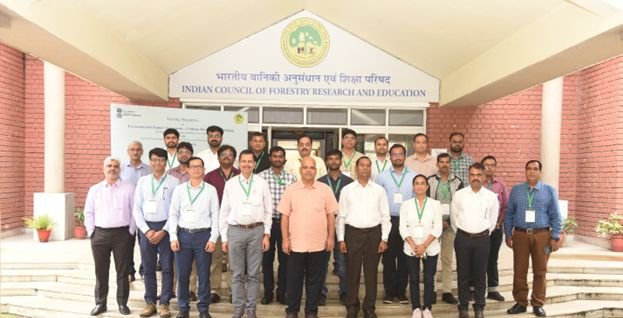Author: Divyanshi Aggarwal, Welham Girls’ School.
Dehradun: AI assistive technology leverages artificial intelligence to “enhance the functionality and accessibility of assistive devices and systems”, empowering individuals with disabilities to perform tasks and participate in daily life more independently.
AI is increasingly woven into our daily lives, from navigation apps to navigating the world. More than 2.5 billion people require assistive technology to help them, and it is predicted to rise to 3.5 billion by 2050, largely due to the growing number of older individuals.
AI is like an impeccable power for people with disabilities assisting visually impaired individuals, serving as communication aids for people with difficulty speaking and providing mobility to people with physical impairments.
AI recently helped a man with paralysis ‘walk again’. “In May 2023, AI technologies in a 40-year-old Dutch man’s body embedded to transmit thoughts along his nervous system enabled him to walk after being paralyzed in a biking accident 12 years prior.”
Devices like Envision Glasses allow visually impaired users to “see” their surroundings by converting visual information into speech and tools like Proloquo2Go give a voice to people with speech impairments, enabling communication through symbols or text-to-speech. Wearables like Soundshirt turn sound into vibrations, helping deaf users “feel” music and sounds in their environment while Companies like CereProc create personalized synthetic voices, helping people retain their unique voice even after losing speech. AI-powered exoskeletons can assist people with mobility impairments by supporting movement and improving balance. Tools like Replika offer emotional support, simulating conversations to reduce feelings of loneliness or anxiety while AI-driven platforms like HireVue or Job Access With Speech (JAWS) help people with disabilities navigate job applications and interviews. Neurable allows users to control devices with brain signals, giving hands-free control over computers, wheelchairs, and prosthetics.
AI has been able to provide an alternative for people having dyslexia with tools like Lexilight that adjust text presentation to make reading easier for people and helping people with ADHD , stay on track through tools like Notion Ai that allows users to break down small tasks and refocus when they drift off tasks.
AI technology has undoubtedly bridged the gap between employment and allowed people an independent, communicative and educational approach, allowing major advancements in fields like healthcare and hospitality.
Though it is easy to rely on AI for our daily needs, some challenges need to be addressed. Algorithms are based on a ‘statistical average’. Therefore, people with disabilities, who don’t fit the average – may be discriminated against in multiple areas such as recruitment, education, and furthermore.
Inaccessible AI systems can lock persons with disabilities out of social participation. They can reinforce existing barriers and create new ones. Therefore, it is crucial to mitigate the risks of AI’s negative impact on the rights of persons with disabilities.
The former UN Special Rapporteur, Quinn, noted that the Convention on the Rights of Persons with Disabilities (UNCRPD) puts on states legal obligations not to discriminate based on disability, organization, or private enterprise. The European Artificial Intelligence Act (AI Act) also entered into force on 1 August 2024 which is the world’s first comprehensive regulation on artificial intelligence that monitors responsible artificial intelligence development and deployment of AI-based technologies in the EU. It is particularly important for persons with disabilities and other marginalized groups, as the AI Act seeks to prevent harm such as discrimination, unfair treatment, or loss of privacy.
States must ensure that measures to combat discrimination and protect human rights are integrated into their national regulations governing the development and implementation of AI. We can make AI developments more inclusive by involving persons with disabilities in creating AI systems. Developers need to consider the need for an intersectional approach, as people with disabilities can also be part of other marginalized groups. That will help us build an inclusive and “equitable” community!











